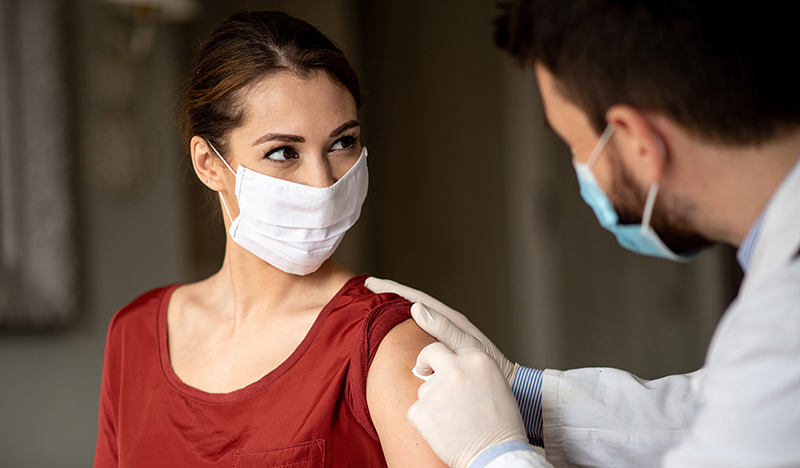
Women receiving one dose of a COVID-19 vaccine during a single menstrual cycle had an increase in cycle length of nearly one day, compared to unvaccinated women, according to a study funded by the National Institutes of Health. The increase in cycle length—a longer time between bleeding—was not associated with any change in the number of days of menses (days of bleeding). The study appears in Obstetrics & Gynecology.
The authors, led by Alison Edelman, M.D., M.P.H., of Oregon Health & Science University, Portland, noted that menstrual cycles typically vary a small amount from month to month, and the increase they saw was well within the range of normal variability. They added that additional research is needed to determine how COVID-19 vaccination could potentially influence other menstrual characteristics, such as associated symptoms (pain, mood changes, etc.) and characteristics of bleeding (including heaviness of flow).
“It is reassuring that the study found only a small, temporary menstrual change in women,” said Diana W. Bianchi, M.D., director of NIH’s Eunice Kennedy Shriver National Institute of Child Health and Human Development (NICHD). “These results provide, for the first time, an opportunity to counsel women about what to expect from COVID-19 vaccination so they can plan accordingly.”
Dr. Bianchi added that little research has previously been conducted on how vaccines for COVID-19 or vaccines for other diseases could potentially influence the menstrual cycle.
NICHD and NIH’s Office of Research on Women’s Health funded the study, which was part of $1.67 million awarded to five institutions to explore potential links between COVID-19 vaccination and menstrual changes.
The study authors analyzed de-identified data from a fertility tracking app, Natural Cycles. Users input data on their temperature and their menstrual cycles and can consent to the use of their de-identified data for research. For vaccinated individuals, data was from three consecutive cycles before vaccination and from three more consecutive cycles, including the cycle or cycles in which vaccination took place. For unvaccinated individuals, data was collected for six consecutive cycles. Of the 3,959 individuals in the study, 2,403 were vaccinated and 1,556 were unvaccinated.
Most vaccinated users received the Pfizer and Moderna vaccines. On average, the first vaccination dose was associated with a .71-day cycle increase in cycle length and the second dose with a .91-day increase. Therefore, users vaccinated over two cycles had an increase of less than one day in each of the vaccination cycles. There were no changes in the number of menstrual bleeding days for the vaccinated individuals. The researchers saw no significant change in cycle length for the unvaccinated app users.
A subgroup of app users who received two vaccine doses in the same menstrual cycle (358 users) had a larger average increase in cycle length of two days. However, this change appears to decrease in subsequent cycles, indicating that the menstrual changes likely are temporary. The authors added that the International Federation of Gynecology and Obstetrics classifies a variation in cycle length as normal if the change is less than eight days.
Reference
Edelman, A. et al. Association between menstrual cycle length and coronavirus disease 2019 (COVID-19) vaccination: a U.S. cohort. Obstetrics & Gynecology. DOI:10.1097/AOG.0000000000004695 (2022)
###
About the Eunice Kennedy Shriver National Institute of Child Health and Human Development (NICHD): NICHD leads research and training to understand human development, improve reproductive health, enhance the lives of children and adolescents, and optimize abilities for all. For more information, visit https://www.nichd.nih.gov.
About the National Institutes of Health (NIH): NIH, the nation’s medical research agency, includes 27 Institutes and Centers and is a component of the U.S. Department of Health and Human Services. NIH is the primary federal agency conducting and supporting basic, clinical, and translational medical research, and is investigating the causes, treatments, and cures for both common and rare diseases. For more information about NIH and its programs, visit https://www.nih.gov.

 BACK TO TOP
BACK TO TOP